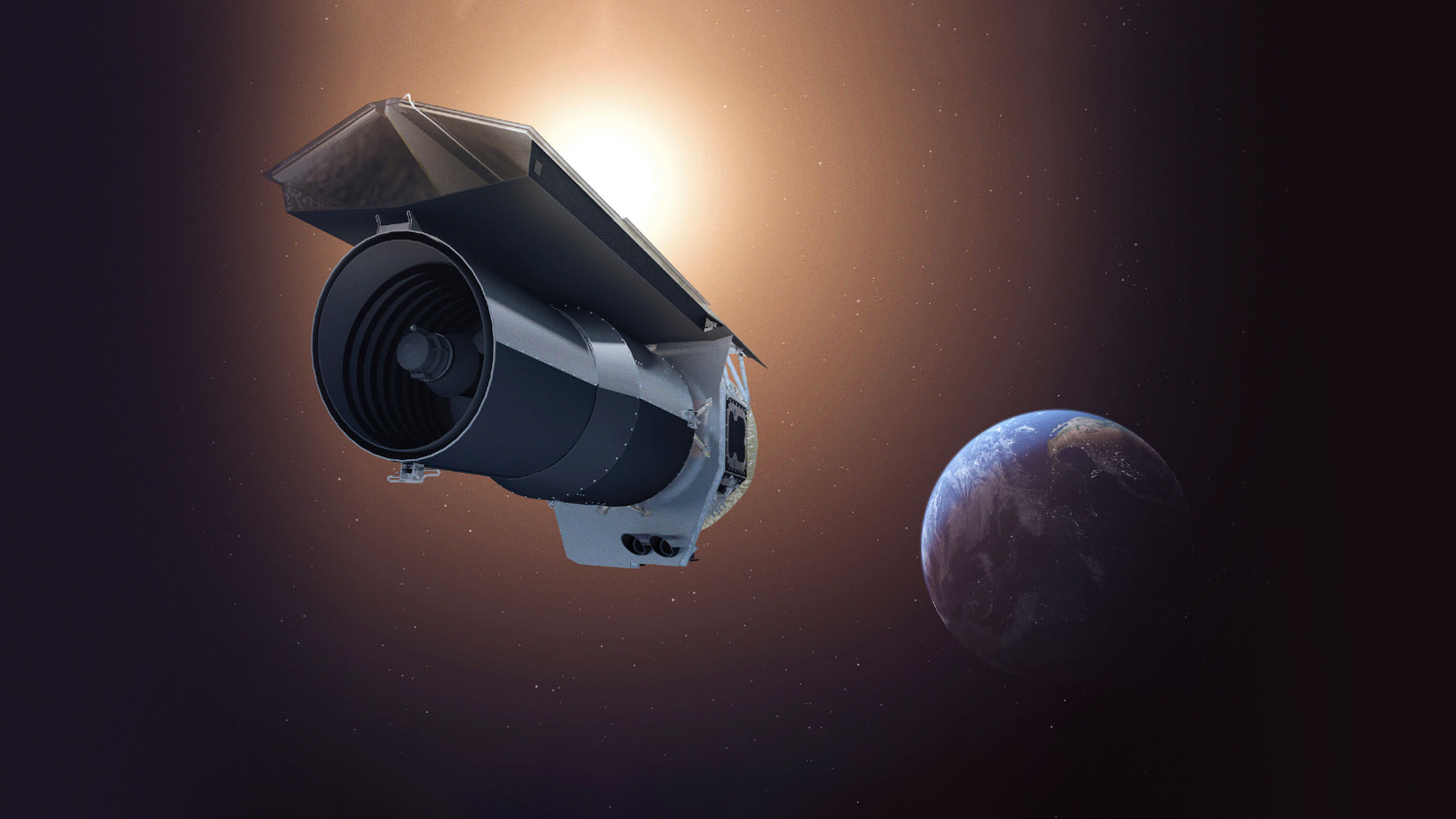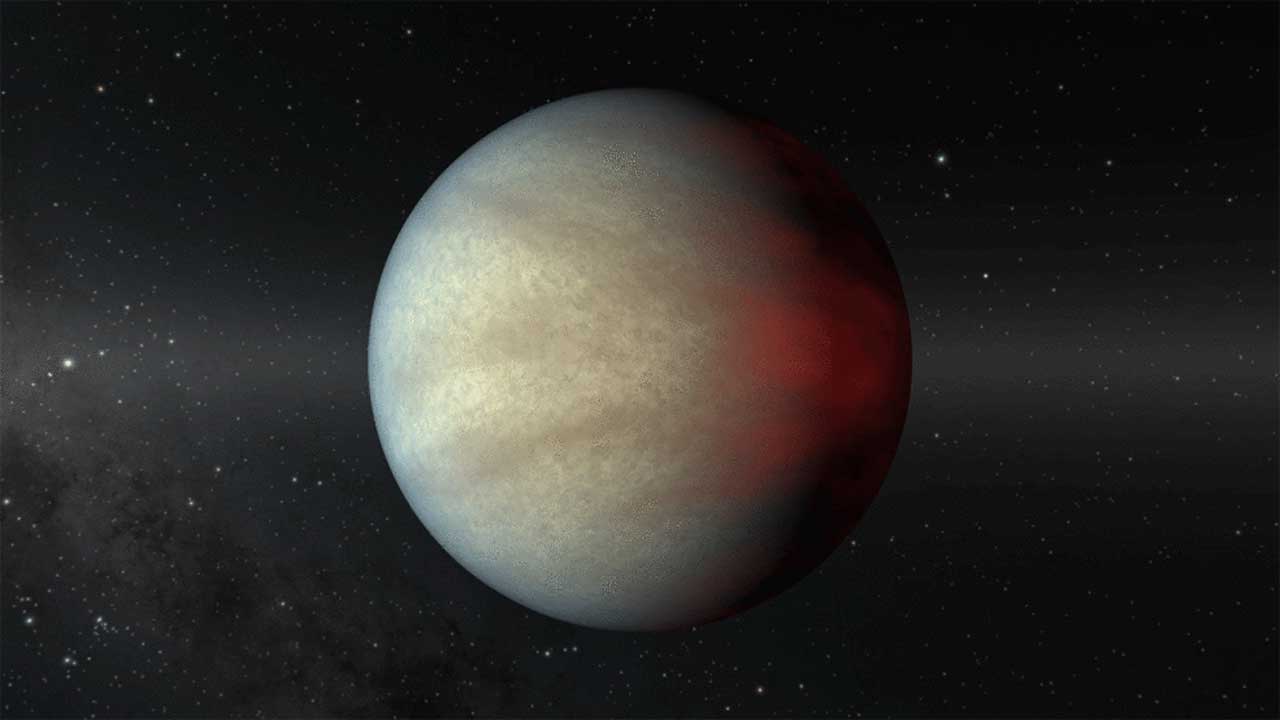The discovery of over 4000 planets (4,171 confirmed and counting!) beyond our Solar System has revolutionized the field of astronomy. Unfortunately, one of the downsides of all these discoveries is how it has shaken up theories about how our Solar System formed. In the past, astronomers thought that the eight planets (or nine, or over one hundred, depending on your point of view) formed where they are currently located.
However, the discovery of gas giants that orbit close to their stars (aka. “Hot Jupiters”) has confounded this thinking. But according to a recent NASA-supported study, the recent discovery of a young gas giant could offer clues as to how Jupiter-like planets form and whether or not they migrate. This discovery was made possible thanks to the Spitzer Space Telescope, which continues to reveal things about our Universe even in retirement.
The study, which recently appeared in The Astronomical Journal, was led by Aaron C. Rizzuto – a postdoctoral fellow with the University of Texas at Austin (UTA) and a 51 Pegasi b Fellow. He was joined by researchers from the Harvard-Smithsonian Center for Astrophysics (CfA), the Dunlap Institute for Astronomy and Astrophysics, and the Cerro Tololo Inter-American Observatory, and multiple universities.

For the sake of their study, the team took a look at HIP 67522 b, an exoplanet that was discovered earlier this year by NASA’s Transiting Exoplanet Survey Satellite (TESS). This exoplanet is about 10 times the diameter of Earth (roughly the same as Jupiter) and is so close to its host star that it only takes seven days to complete a full orbit.
These features also make HIP 67522 b easy to detect using the Transit Method, where astronomers monitor stars for periodic dips in brightness to determine the presence of planets (as well as their size and orbital period). However, this exoplanet still required confirmation using the infrared data from the now-retired Spitzer Space Telescope since young stars are known to have sunspots (which also lead to periodic dips in brightness.)
But what is more interesting is the fact that this hot Jupiter’s star (located about 490 light-years from Earth) is just 17 million years old. In effect, HIP 67522 b is the youngest hot Jupiter ever observed given that in all previous cases, hot Jupiters were found to be more than a billion years old. This could mean that this particular hot Jupiter is still in the process of evolving, thus allowing astronomers to test theories about gas giant migration.
As Aaron Rizzuto, an exoplanet scientist at the University of Texas at Austin who led the study, said in a recent NASA statement:
“We can learn a lot about our solar system and its history by studying the planets and other things orbiting the Sun. But we will never know how unique or how common our solar system is unless we’re out there looking for exoplanets. Exoplanet scientists are finding out how our solar system fits in the bigger picture of planet formation in the universe.”
To summarize, there are three main theories as to how hot Jupiters get so close to their parent stars. One is that they form close to their stars and remain there over the course of their lifetimes. The other two, in contrast, claim that these planets formed farther out in their solar systems and migrated inward later in their history. The only point of contention for these latter schools is, when and how did they migrate?
Right off the bat, the first theory strikes many astronomers as unlikely since gas giants forming close to their stars would be subject to extreme heat and periodic stellar bursts. Over time, the gaseous material of these planets would be vaporized or blown way, perhaps before they are even done forming. In this respect, the second and third theories seem more plausible since they venture that gas giants form in a system’s colder region.
This region exists beyond the boundary in a system where volatile elements (like water, carbon dioxide, methane, ammonia, etc.) are known to freeze – aka. the Frost Line, or Snow Line. Given that gas giants are predominantly composed of hydrogen, helium, and volatile elements (though they are believed to contain solid cores), this theory seems more logical.
As noted, the timing and mechanism for these migrations are where the second and third theory differ. The former asserts that hot Jupiters begin migrating early in the system’s history when they would still be surrounded by the gas and dust of a protoplanetary disk. In this scenario, the disk’s gravity interacts with the mass of the planet, thus interrupting the planet’s orbit and causing it to migrate inward.

The latter hypothesis maintains that hot Jupiters migrate later once the other planets in the system have formed and that it’s their gravity that drives the migration process. This is where the discovery of HIP 67522 b comes into play since it is so young compared to other hot Jupiters. At less than 17 million years of age – less than 2% as old as its peers – HIP 67522 b is already orbiting very closely to its star.
IIn short, this discovery has cast some doubt on the theory that gas giants migrate before their formation history is complete. What’s more, the star system HIP 67522 shows no evidence of having a protoplanetary ring. However, astronomer can’t be sure if this young hot Jupiter is an outlier, or a typical case when it comes to gas giants.
While not involved in the study, Yasuhiro Hasegawa, an astrophysicist specializing in planet formation at NASA’s Jet Propulsion Laboratory, expressed some thoughts on its imoplications:
“Scientists would like to know if there is a dominant mechanism that forms most hot Jupiters. In the community right now there is no clear consensus about which formation hypothesis is most important for reproducing the population we have observed. The discovery of this young hot Jupiter is exciting, but it’s only a hint at the answer. To solve the mystery, we will need more.”
This discovery also showcases how Spitzer, even in retirement, is still providing us with valuable scientific discoveries. Next year, the James Webb Space Telescope (JWST) will be taking to space, which will serve as a successor to Spitzer (among other space telescopes). Hopefully, it too will reveal new and exciting things that challenge our notions about the Universe!
Further Reading: NASA, The Astronomical Journal

